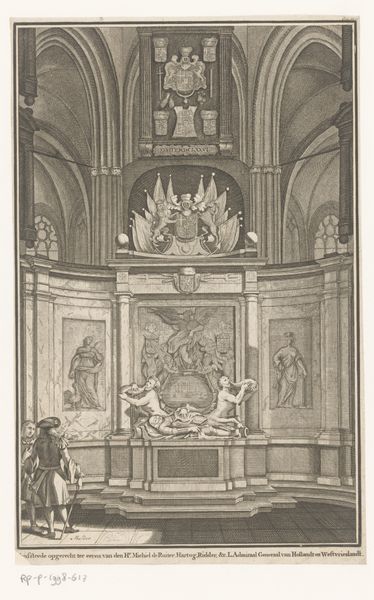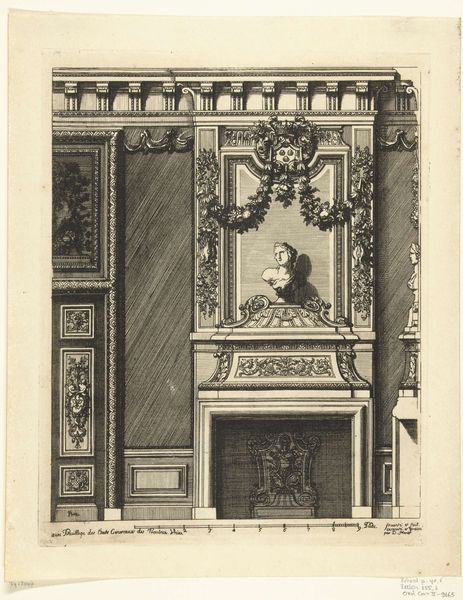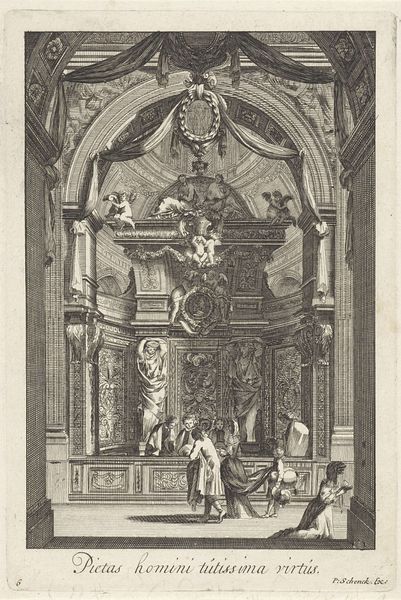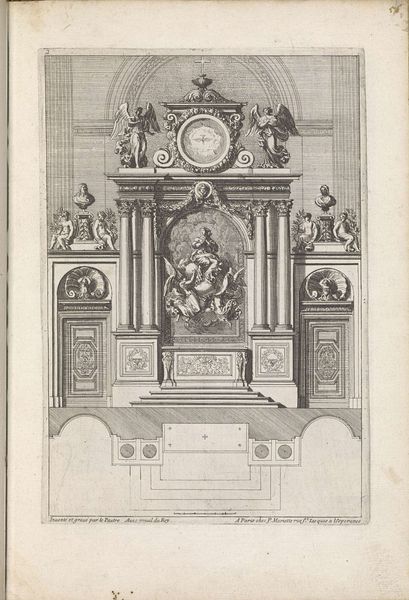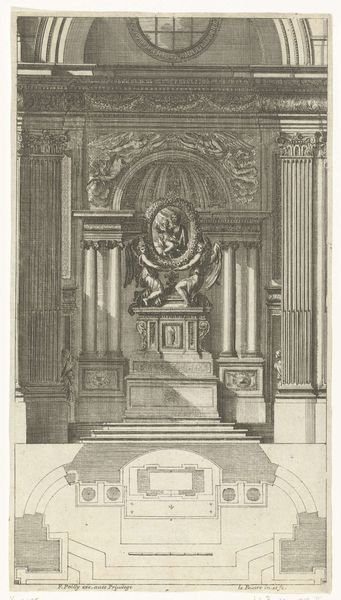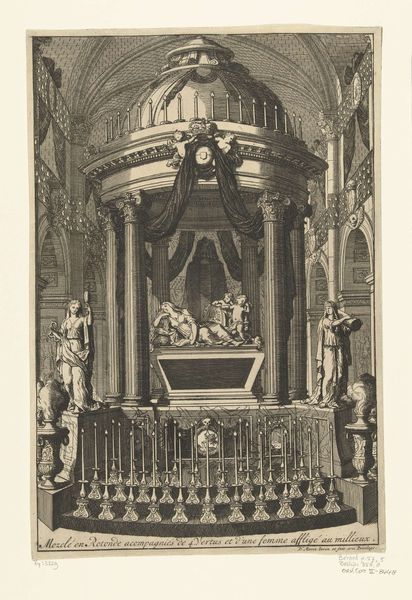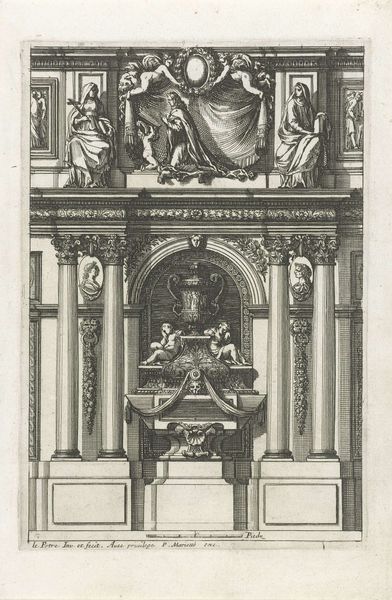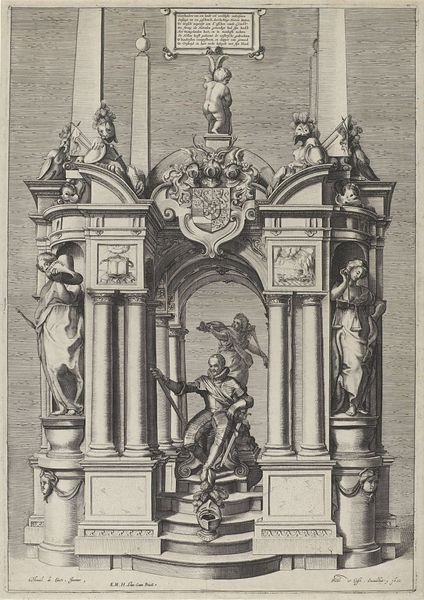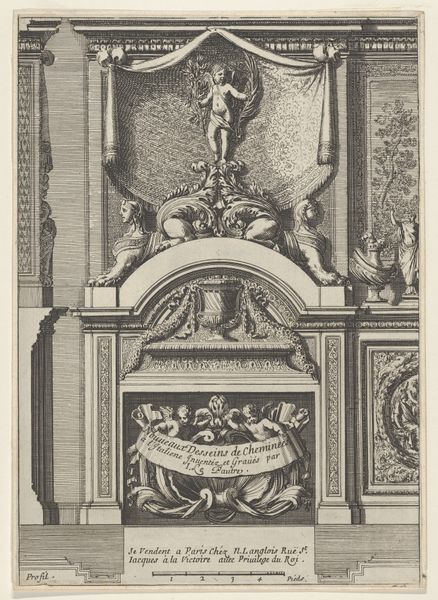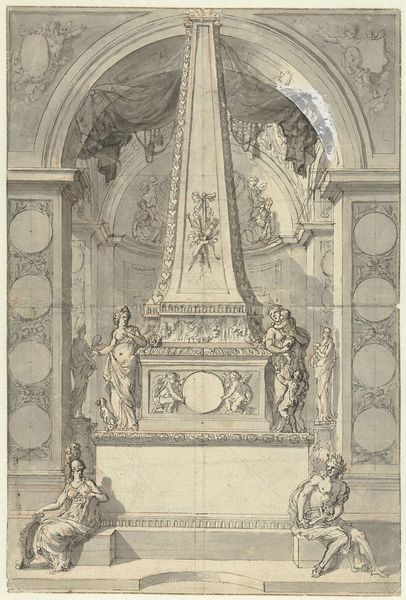
Praalgraf van Michiel de Ruyter in de Nieuwe Kerk te Amsterdam 1687 - 1726
0:00
0:00
josephmulder
Rijksmuseum
print, engraving, architecture
#
historical design
#
baroque
#
dutch-golden-age
# print
#
traditional media
#
19th century
#
history-painting
#
engraving
#
architecture
Dimensions: height 286 mm, width 186 mm
Copyright: Rijks Museum: Open Domain
Editor: This print, titled "Praalgraf van Michiel de Ruyter in de Nieuwe Kerk te Amsterdam," dates from 1687 to 1726 and is attributed to Joseph Mulder. The work depicts the elaborate tomb of a Dutch naval hero, composed with precise architectural details. The mood, with its grandeur and classical motifs, feels both commemorative and somber. What do you make of its historical and cultural significance, especially in the context of Dutch Golden Age artistry? Curator: Ah, yes, it almost sings to me of the pride and melancholic triumph embedded in that era. Don't you feel it? The Dutch Golden Age, teetering on the edge of decline even then. Here's De Ruyter, not just any admiral, but their hero. This tomb… this print of the tomb… is a declaration! A carved-in-stone, or etched-in-copper, reminder of what they achieved, their naval prowess, their trading empire! See how Baroque extravagance almost strains against that famously Dutch Calvinist sensibility. It’s as if they're whispering, "We're magnificent, even if we're not *supposed* to be.” Editor: I see what you mean, the tension between pride and humility. The coat of arms is so prominent, almost like a challenge to modesty. Curator: Exactly! It's pure theatre, isn’t it? Remember, those carved figures aren’t just decoration. They’re allegories, grand pronouncements made three-dimensionally. Now look at how those small viewing figures have been rendered; their gaze draws our own to the tomb within its architectural niche. Everything leads toward a concentrated symbolic narrative, of a man who was celebrated on an almost mythical scale. I think you feel that power within it. Don't you? Editor: Yes, I can see it. Thanks for pointing out those layers. It makes you think about how societies choose to remember their heroes. Curator: Indeed. It makes you consider your *own* heroes too, perhaps? Food for thought, eh?
Comments
No comments
Be the first to comment and join the conversation on the ultimate creative platform.
